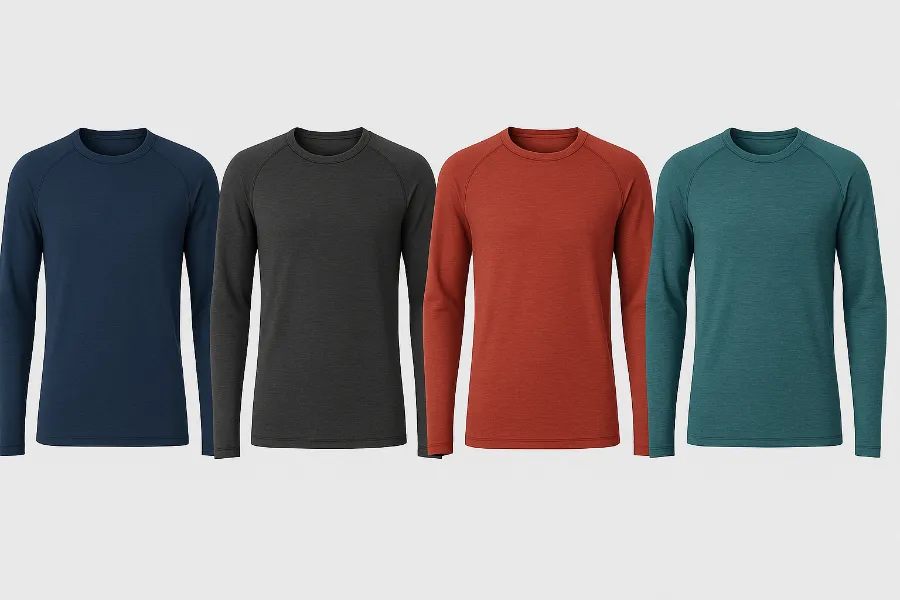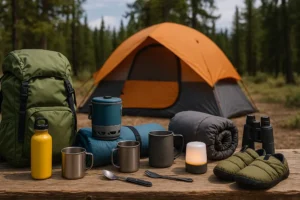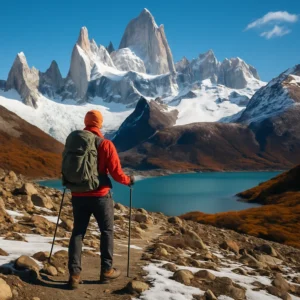
When you’re out on the trail, comfort is more than a luxury—it’s safety. The best base layer for hiking can make the difference between finishing your hike feeling strong or ending up cold, clammy, and miserable. Whether you’re tackling a snowy summit or sweating through summer switchbacks, your base layer is the foundation of your outdoor layering system. Let’s break down how to choose the right one so you’re prepared for anything the trail throws at you.
What is a Base Layer?
A base layer is the clothing that sits directly against your skin. Its main job? Managing moisture. When you hike, your body generates sweat, and without the right base layer, that sweat lingers on your skin, leaving you chilled in cold weather or sticky in the heat.
In the classic three-layer system, the base layer sits closest to you, followed by an insulating middle layer and a protective outer shell. Even though the base layer is thin, it plays a huge role in keeping your body temperature regulated and your skin dry.
Why the Right Base Layer Matters
Choosing the best base layer for hiking is about more than comfort. It’s about staying safe in changing conditions. Sweat that isn’t managed properly can chill you quickly in cold weather, increasing the risk of hypothermia. In hot weather, the wrong fabric can trap heat, leaving you overheated and sluggish.
A good base layer:
- Moves sweat away from your skin
- Dries quickly
- Works with your other layers to regulate body temperature
- Adds minimal bulk while maximizing comfort
Base Layer Materials
Not all fabrics are created equal. The material you choose defines how your base layer performs on the trail.
Synthetic (Polyester, Nylon, Blends)
Synthetics are the workhorse of base layers.
Pros
- Excellent moisture-wicking and fast drying
- Durable and abrasion resistant
- Usually more affordable
Cons
- Can trap odor after heavy use
- Less cozy than wool in very cold conditions
Best for: wet climates, budget-conscious hikers, and high-output activities where drying speed matters most.

Merino Wool
Merino wool is the gold standard for many hikers.
Pros
- Naturally regulates temperature—keeps you warm in cold and cool in heat
- Soft and non-itchy
- Excellent odor resistance (you can wear it for days without stink)
Cons
- Pricier than synthetics
- Less durable, especially with heavy packs or rough washing
Best for: multi-day hikes, cold conditions, and hikers who value comfort and odor control.
Silk
Silk is lightweight and smooth, making it comfortable for low-intensity hikes.
Pros
- Lightweight and breathable
- Very soft on skin
Cons
- Not very durable
- Retains odor and requires frequent washing
Best for: casual hikes or low-exertion activities in mild weather.
Quick Comparison
| Material | Pros | Cons | Best Use Case |
|---|---|---|---|
| Synthetic | Fast drying, durable, affordable | Odor retention | Wet climates, sweaty hikes |
| Merino Wool | Warm, soft, odor resistant | Expensive, less durable | Cold hikes, multi-day treks |
| Silk | Lightweight, soft | Fragile, odor retention | Casual, mild-weather hikes |
Choosing the Right Weight
Base layers aren’t one-size-fits-all. Their thickness determines how warm they feel:
- Lightweight / Ultralight: Best for warm weather or high-intensity hikes where sweat is constant.
- Midweight: Ideal for cool to cold weather, offering a balance of warmth and breathability.
- Heavyweight / Expedition: Thickest and warmest option, designed for sub-freezing temperatures and low activity.
Think of weight as matching your environment and exertion level, not just the season. A summer hiker in the desert may want an ultralight synthetic tee, while a winter backpacker needs midweight merino.
Fit and Features
A base layer only works if it’s close to your skin. Look for:
- Snug fit: enhances wicking performance
- Stretch: spandex blends add comfort and mobility
- Zippers: quarter or half zips for ventilation
- Thumbholes: keep sleeves in place and add warmth to hands
- UPF protection: helpful for sunny, exposed hikes
Avoid loose cotton tees, which trap moisture and make you clammy.
Best Base Layers by Condition
- Cold weather hiking: Merino wool or midweight synthetics keep you warm while managing moisture.
- Rainy hikes: Synthetic layers excel because they dry quickly, even under a wet shell.
- Hot weather hiking: Ultralight synthetics or merino tees help wick sweat and provide sun protection without overheating.
Practical Tips for Hikers
- Avoid cotton: It absorbs sweat, stays wet, and can be dangerous in cold weather.
- Layer smart: Add or remove layers as your activity level changes to avoid sweating out your base layer.
- Care properly: Wash merino wool on gentle cycles and air dry to extend its life.
- Balance budget and performance: You don’t always need the priciest layer, but investing in quality for your main hiking season is worthwhile.

Recommended Picks
Here are some proven favorites for different budgets:
- Budget-friendly: REI Co-op Midweight Base Layer Crew (synthetic)
- Mid-range: Patagonia Capilene Midweight Zip-Neck (synthetic) or Smartwool 250 Crew (merino)
- Premium: Arc’teryx Rho AR (synthetic blend) or Icebreaker 200 Oasis (merino)
Each of these options balances comfort, performance, and durability depending on your needs.
Conclusion
The best base layer for hiking is the one that matches your trail, weather, and personal comfort. If you’re heading into multi-day cold-weather treks, merino wool may be worth the investment. For hot summer climbs or wet forests, synthetics are a reliable and budget-friendly choice. Silk remains an option for casual outings.
Think of your base layer as your trail foundation: get it right, and every mile becomes more enjoyable. Choose wisely, and you’ll stay dry, comfortable, and ready for adventure no matter where the trail leads.










